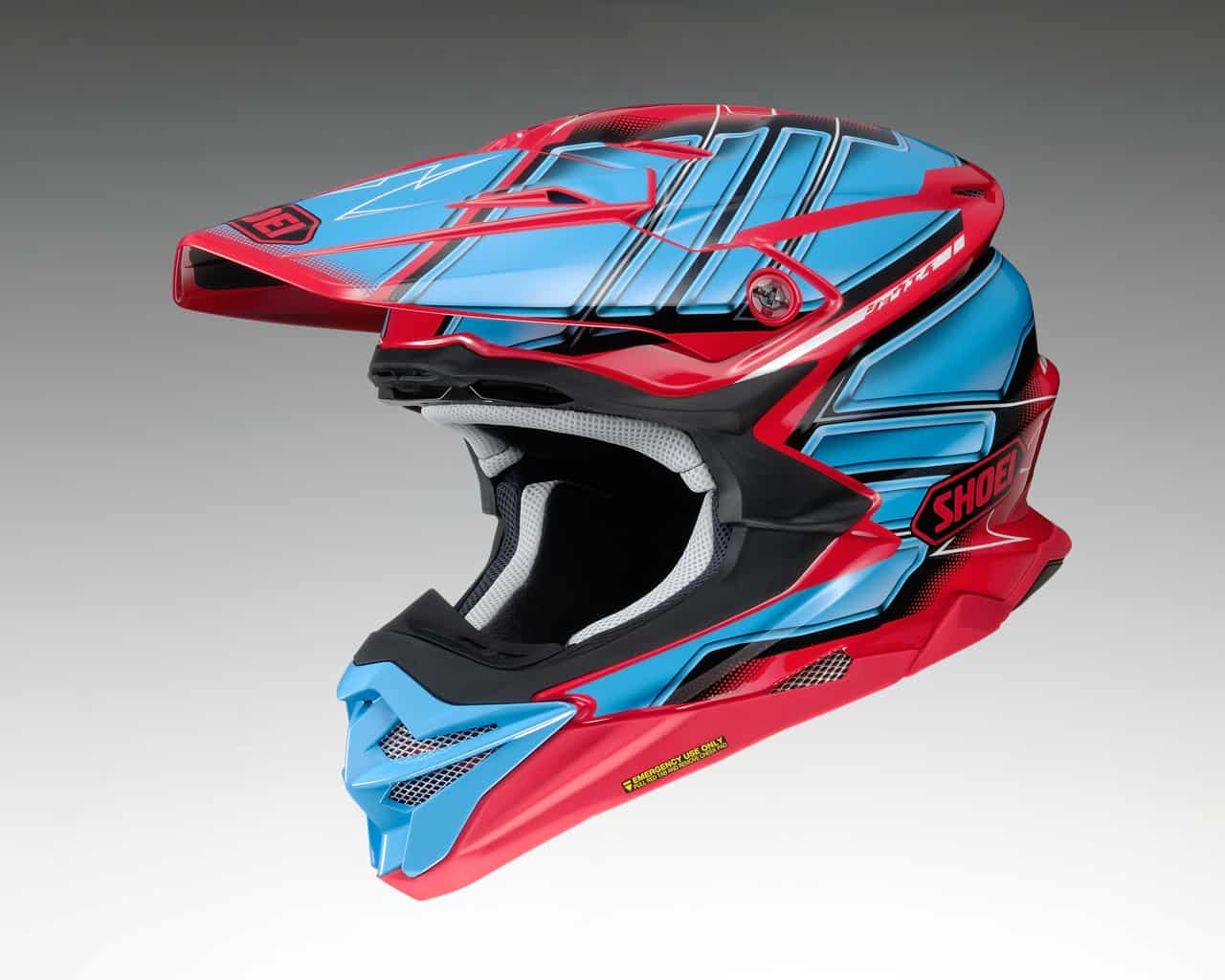TEN THINGS ABOUT THE SHOEI’S NEW M.E.D.S. SYSTEM
 (1) M.E.D.S. Shoei’s Motion Energy Distribution System (M.E.D.S.) is a proprietary exclusive in the new VFX-EVO helmet. This new helmet offers a dual-layer, multi-density EPS liner with the lightweight, impact-absorbing and comfortable characteristics of Shoei’s traditional EPS helmet integrated with M.E.D.S. to reduce rotational acceleration energy to the head in an accident. The idea of M.E.D.S. is similar to the popular MIPS (Multi-directional Impact Protection System), which you see in helmets from Fly Racing and Troy Lee Designs. Both systems’ primary objective is to reduce rotational motion.
(1) M.E.D.S. Shoei’s Motion Energy Distribution System (M.E.D.S.) is a proprietary exclusive in the new VFX-EVO helmet. This new helmet offers a dual-layer, multi-density EPS liner with the lightweight, impact-absorbing and comfortable characteristics of Shoei’s traditional EPS helmet integrated with M.E.D.S. to reduce rotational acceleration energy to the head in an accident. The idea of M.E.D.S. is similar to the popular MIPS (Multi-directional Impact Protection System), which you see in helmets from Fly Racing and Troy Lee Designs. Both systems’ primary objective is to reduce rotational motion.
(2) EPS. The Expanded Polystyrene System (EPS) is the traditional foam system inside a helmet. It is designed to absorb the energy of an impact. Shoei’s dual-layer, multi-density EPS provides impact absorption by utilizing varying densities of foam in key areas around the rider’s head. Motocross impacts can often cause sloshing of the rider’s brain under rotational forces. Extensive testing shows that M.E.D.S. is more effective at reducing rotational forces than traditional EPS designs alone, so Shoei has decided to adopt the M.E.D.S. into its new VFX-EVO helmet in conjunction with the normal EPS. Compared to its predecessor (the VFX-W), the new VFX-EVO reduces rotational acceleration to the rider’s head by 15 percent without compromising an ounce of performance.
(3) Function. The M.E.D.S. is anchored by a larger center column. The inner layer of the dual-layer system swings during impact rather than staying stationary, allowing its three strategically designed perimeter columns to absorb the energy and disperse the heavy impacts. The result is a reduction of rotational forces to the rider’s head.
(4) Structure. M.E.D.S. only becomes effective under a significant impact. It doesn’t add or take away any sort of comfort for the rider.
(5) Testing. There is no standard for rotational energy testing on helmets. M.E.D.S. was developed based on published scientific research on rotational energy, as well as Shoei’s own in-house testing. In a nutshell, Shoei used a hybrid dummy head that is dropped at a 45-degree flat impact angle against sandpaper to create a twisting effect, like when a helmet hits the ground. Shoei tested front to rear, side to side and at oblique impacts with this procedure.
(6) Weight. The M.E.D.S. does not add any additional weight to the helmet. The full EPS construction preserves the lightweight characteristics of the VFX-W helmet.
 THE GEAR: Jersey: AXO Trans-AM. Pants: AXO Trans-AM. Helmet: Shoei VFX-W. Goggles: EKS Brand EKS-S. Boots: AXO A2
THE GEAR: Jersey: AXO Trans-AM. Pants: AXO Trans-AM. Helmet: Shoei VFX-W. Goggles: EKS Brand EKS-S. Boots: AXO A2
(7) Shell. The shell size of the helmet does not increase with the integration of the M.E.D.S. system. The VFX-EVO with EPS is almost the same size as its predecessor, the VFX-W, and maintains its smaller profile.
(8) Safety performance. Although Shoei decided to implement a system to address rotational forces, it was crucial that the helmet not sacrifice any of its current safety standards. M.E.D.S. added an additional layer of safety to the helmet without taking anything away from the helmet’s original safety features. The M.E.D.S.-equipped VFX-EVO is effective at any impact angle and just as effective as its predecessor, the VFX-W, at both high- and low-speed impacts. The new VFX-EVO meets both DOT and SNELL 2015 standards.
(9) Technology. The technology behind M.E.D.S. was created to keep your skull and neck from taking high-speed impacts in accidents. The M.E.D.S. does not require any additional rubber or plastic parts that could increase the weight of the helmet.
(10) Future. The future of helmet safety depends on the market’s demands, as well as any new homologation standards that may be implemented, like the FIM’s new FRHPhe-01 helmet testing protocol that will be implemented in 2019. This is the first organization to include rotational testing.







Comments are closed.